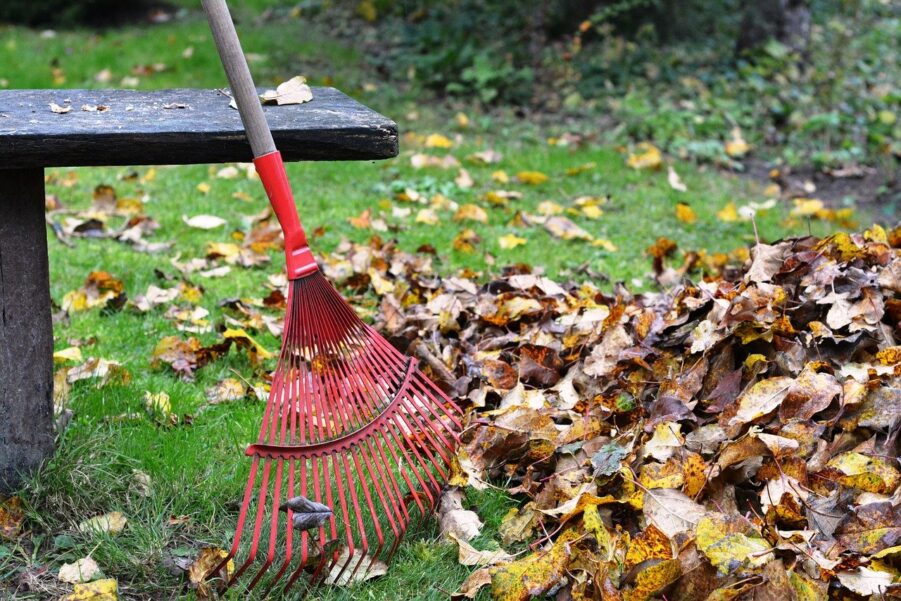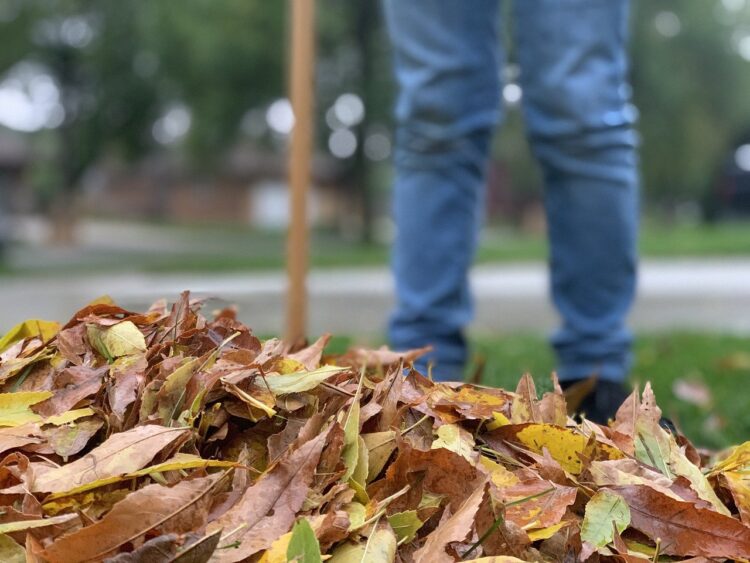
Trees, shrubs, and other plants make a lot of mess when they drop their leaves in the fall. All of the leaves, twigs, branches, and other plant matter can pile up quickly over the course of a year. Within a few weeks or months it can cover a well-groomed lawn. Biologists and naturalists call all this mess “leaf litter”. Although it can be irritating and backbreaking work for homeowners, it is actually very ecologically important. The leaf litter in your yard plays a valuable role for local wildlife, as it does in natural ecosystems. If you want to do something good for wildlife in your back yard, it can be better to not rake those leaves.
There’s a lot of pressure to have a “clean” tidy yard after all of that pileup. Even if we won’t be using the space much until the spring. Come fall, the roar of leafblowers fills the air and leaves and sticks everywhere are being rounded up and crammed into paper bags. They get stacked up in neat rows on the sidewalk to go to the nearest dump. Whole industries exist around tidying up people’s yards so they can look nice even when the weather’s too harsh for us to hang around outside. But is that all really necessary?
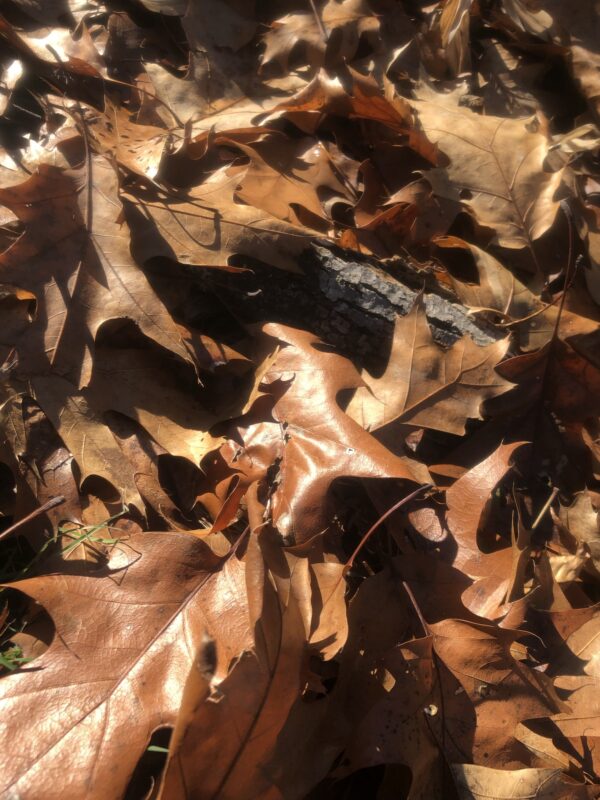
More and more people would say, no. People are starting to question our obsession with clean yards, and there are increasing calls to “leave the leaves”. After all, no one rakes or leaf-blows the forest floor in natural areas. Yet, that doesn’t stop beautiful wildflowers and other gorgeous green vegetation from springing up in great abundance. In fact, it can even keep those flowers healthier. So let’s explore:
Why is it better not to rake your leaves?
As it turns out, “leaving the leaves” has many benefits for the soil and plant health of your lawn or garden. Those benefits also extend to any wildlife that might live in your neighborhood. Let’s start with the benefits to your backyard. Leaf litter benefits your garden and backyard plants and trees in several ways:
- Keeping in moisture and preventing drying
- Insulating the soil, plant roots, seedlings and seeds from extreme temperatures
- Making for healthier, more nutritious soil
- Housing the ‘natural enemies’ of common pests, which protect your garden
How do leaves help keep my garden and backyard plants healthy?
Leaf litter forms a very effective and complex barrier between the soil and the rest of the environment—namely, the air. When rain falls on the leaf litter, it has time to seep slowly into the soil, and doesn’t evaporate quickly when the sun comes beating down. Instead, the leaves hold the moisture and prevent the soil from drying out. They can also keep the soil from being washed away and losing nutrients in big rainstorms.
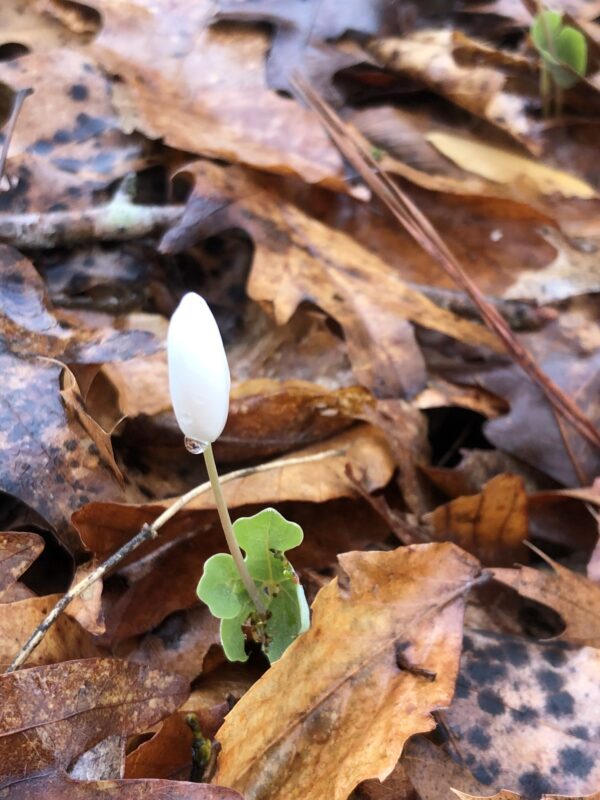
This protective layer also acts like an insulating blanket. It prevents the upper layers of soil from overheating on super hot days, and freezing too deeply when it gets cold. These sorts of temperature fluctuations can be fatal for young plants and some seeds.
They can also stress the root systems of perennial plants, bushes, and trees. This makes them less healthy and more prone to dying. In this way, leaf litter protects your garden plants throughout the winter. They will be more healthy by the time the weather gets nice and you’re ready to enjoy the outdoors.
This same blanket effect can also help keep weeds down, saving you hours of back-breaking labor in the spring and summer. Many weeds are good at establishing themselves in what naturalists call “disturbed” areas. These often have bare ground without leaf litter, and eroded or turned-over soil. Leaflitter protects the soil and the plants that are already established there. A thick layer of leaves can also prevent new weeds from gaining a foothold, leaving only the plants you want in the flowerbed.
A Living Clean-up Crew
The leaf litter is not just a blanket that sits there and covers up the ground. It supports a living community of fungi, invertebrates like insects and centipedes, bacteria and other microbes. These community breaks down the “mess” of plant material into fresh, high-quality soil. The diversity of leaf litter critters have their own ecological interactions no different from wildebeest, gazelles and lions on the Serengeti.

In the process of carving out their lives in this little world, they break it down into its constituent parts. This makes important nutrients available in the soil. You guessed it: these are the same nutrients that we add to the soil using fertilizers. They make our flowers grow prettier and tomatoes juicier and tastier, without the expense and pollution involved with store-bought fertilizer.
By allowing a leaf litter community to develop in our yards, we get free fertilizer provided by a hard-working team of decomposers—living things that break down dead organic matter. The leaf litter can also harbor mycorrhizal fungi, which develop in close association with the roots of many plants. Many of these fungi drastically increase plant growth by helping the plant roots better absorb and access nutrients.
The enemy of my enemy…
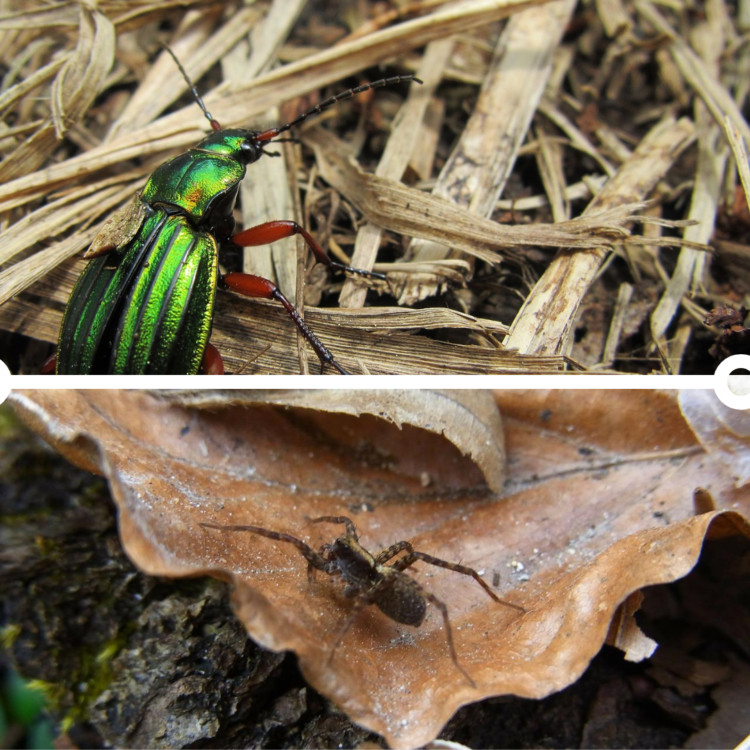
In addition to the fertilizer, the leaf litter also supports a huge diversity of what we call “natural enemies”. These are species that prey upon or attack harmful lawn or garden pests. If decomposers help reduce or replace the need for fertilizer, natural enemies do the same for pesticides.
They feed voraciously upon pests like grubs and aphids. Many of these species are very sensitive to disturbances in the soil or the leaf litter. For example, researchers have found that areas with more leaf litter have more robust and diverse communities of spiders and carabid beetles. Both of these species are excellent natural enemies of common pests in forest ecosystems.
Are there other benefits to not raking leaves?
Yes! Beyond benefits to your garden, leaf litter will also ensure a more vibrant, beautiful, and interesting array of wildlife around your home when spring returns. Leaf litter provides the same sheltering protection for many animals that is does for garden plants. It keeps them from drying out or freezing in the winter, and adds an extra layer of insulation when they shelter underground. If you’ve ever wondered where bugs go in the winter, sheltered habitats like the leaf litter are actually a big part of the answer.
Butterflies & Moths

A great number of beautiful and attractive insects will spend the winter in the leaf litter of your backyard. For example, Luna moths (Actias luna) and swallowtail butterflies (Papilio sp.) spend the winter as pupae hidden amongst the leaf litter. Other butterflies like the Red-spotted purple (Limenitis arthemis) and viceroy (L. archippus) will spend the winter as caterpillars and roll themselves up in a fallen leaf. They stay hidden in all of that “mess” dropped by the trees in Autumn. Still others like tortoiseshells (Nymphalis sp.) and commas (Polygonia sp.) will overwinter as adults, hidden and protected in the litter.
Bees
Queen bumblebees overwinter by tunneling into the ground. They are usually the sole survivors of a summer colony and are responsible for bringing their cute, fuzzy, clumsy workers to our garden flowers. Leaflitter can help them better survive the winter cold by adding an extra layer of insulation. This is one way to make sure that there will be plenty of big bumbles buzzing around your yard in spring.
Other Critters
Amphibians like toads, salamanders, and frogs can be very sensitive to the humidity in their environment. A good layer of leaf litter can help them maintain the moisture levels they need to survive at any time of year. Small (harmless!) snakes and box turtles (Terrapene sp.) hide in leaf litter in the spring.
A host of beautiful bird species seek out any healthy leaf-litter community to scratch around for food. If you live in North America, you can often expect to see American robins, a common garden favorite. Other leaf litter foragers include towhees, mockingbirds or catbirds, and Zonotrichia sparrows like white-throated or white-crowned sparrows.
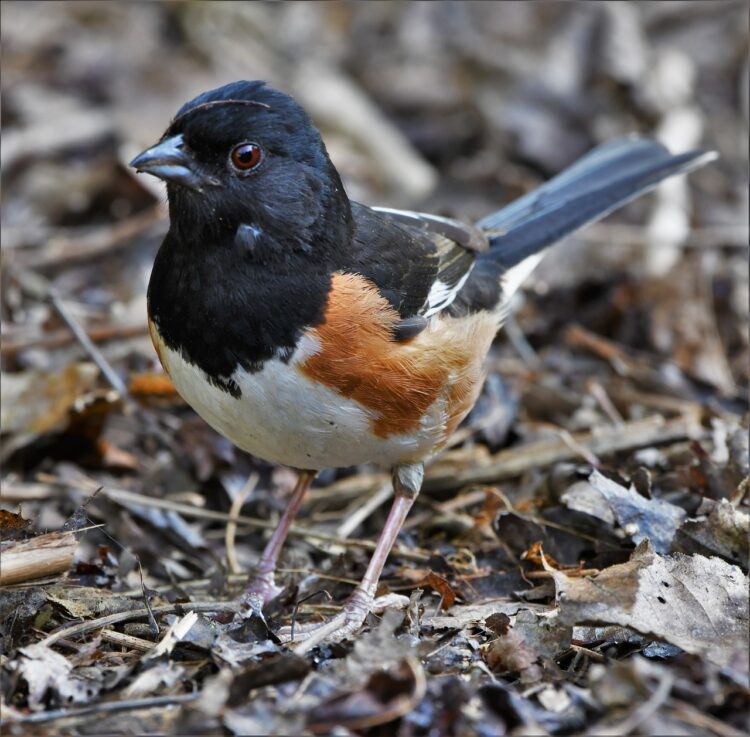
All of this diversity of life actually comes back to help your garden even more. Vibrant and flourishing leaf litter communities lead to more rapid and efficient breakdown of the leaves. This builds more valuable soil for your garden. As its wildlife community grows, the leaf litter will pay increasing dividends to your garden.
What should I do with the leaves in my yard to protect wildlife?
Here are some basic tips for protecting wildlife and maintaining beneficial leaf litter in your yard:
- Mow leaves into your lawn to provide some protection and natural fertilizer during the winter
- Rake leaves from areas where you can’t have them, and pile them up where you can
- If you really need to rake, wait to do it until freezing temperatures have stopped in the spring
So if leaf litter has so many benefits for our yards, what’s the best way to manage it? Good news for those of us who are busy or lazy—the less you do, often times the better. Of course, we can’t always leave all the leaves everywhere. A thick layer of leaves can smother turf lawns, or muck up a patio. Instead of blowing leaves around, however, consider raking them from places you can’t keep them. You can then leave them somewhere else in your yard to protect the wildlife hidden within.
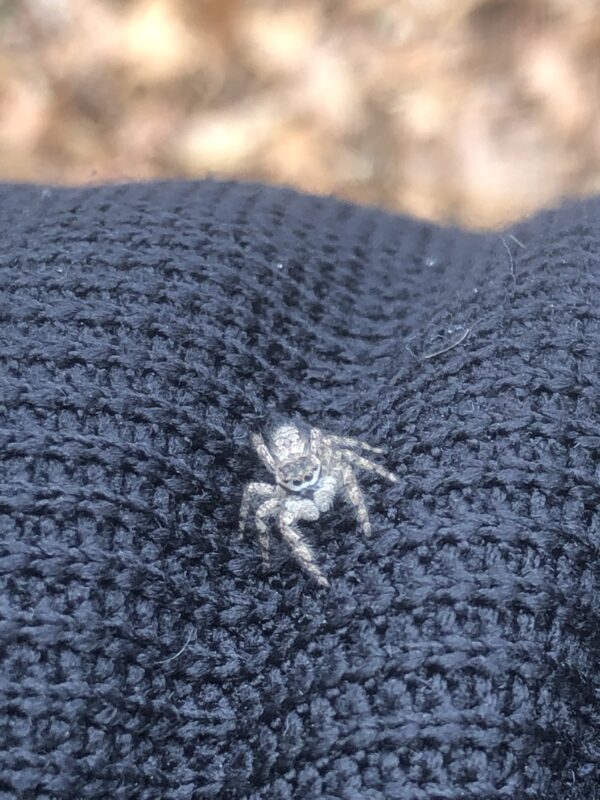
Rather than shipping all of your leaves away, save money and time by relocating them somewhere else in your yard. Keeping leaves more spread out over a wider area gives more space for a leaf litter community. This can be more beneficial for wildlife than a giant compost pile.
You can scatter the leaves around the roots of shrubs, trees or flowerbeds to protect them over the winter. Keeping some fallen branches and twigs and mixing them in with the litter will add variety to the habitat. That could pay major dividends in terms of increasing natural pest control the following spring.
To make sure your lawn gets extra nutrients, you can mow the leaves on your lawn in the fall. The smaller pieces won’t block sunlight or smother the grass. Decomposers will break them down into the soil as a natural fertilizer.
Thanks for reading!
Do you have other wildlife gardening tips you’d like to see in Gulo in Nature? Be sure to check out other Naturalist Answers posts or let me know your questions in the comments or contact page.

